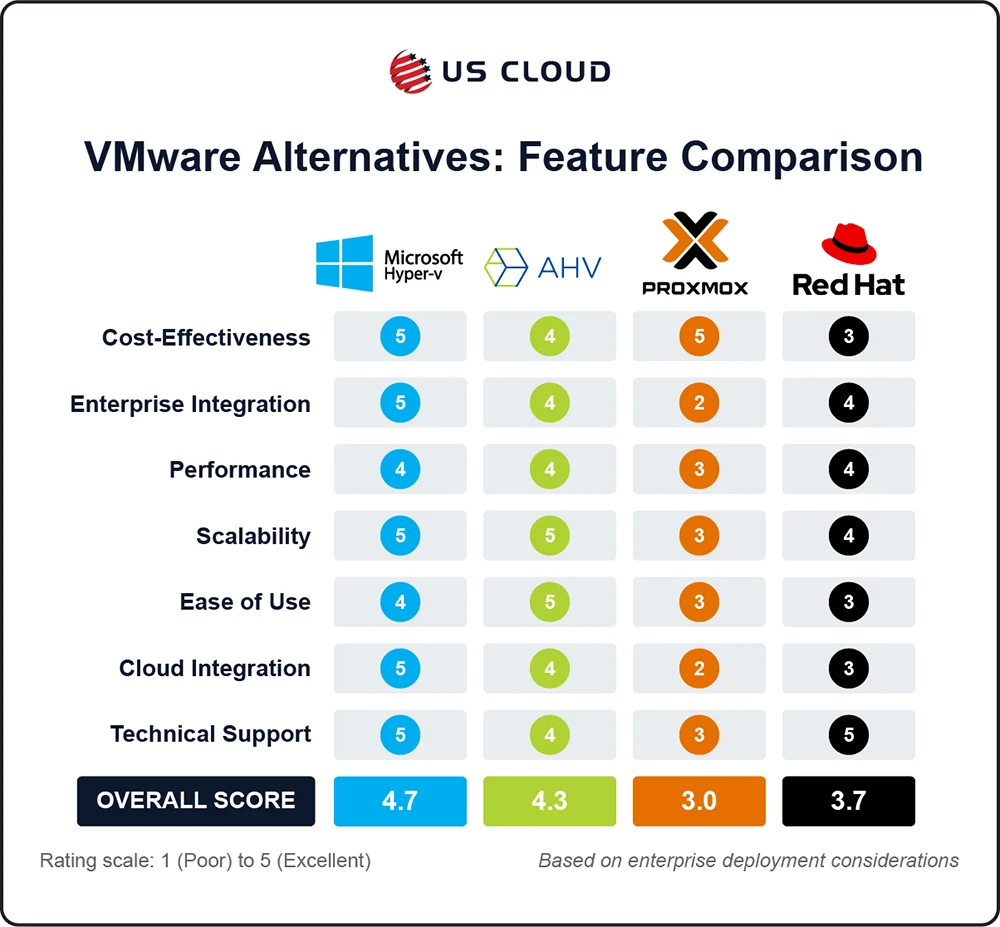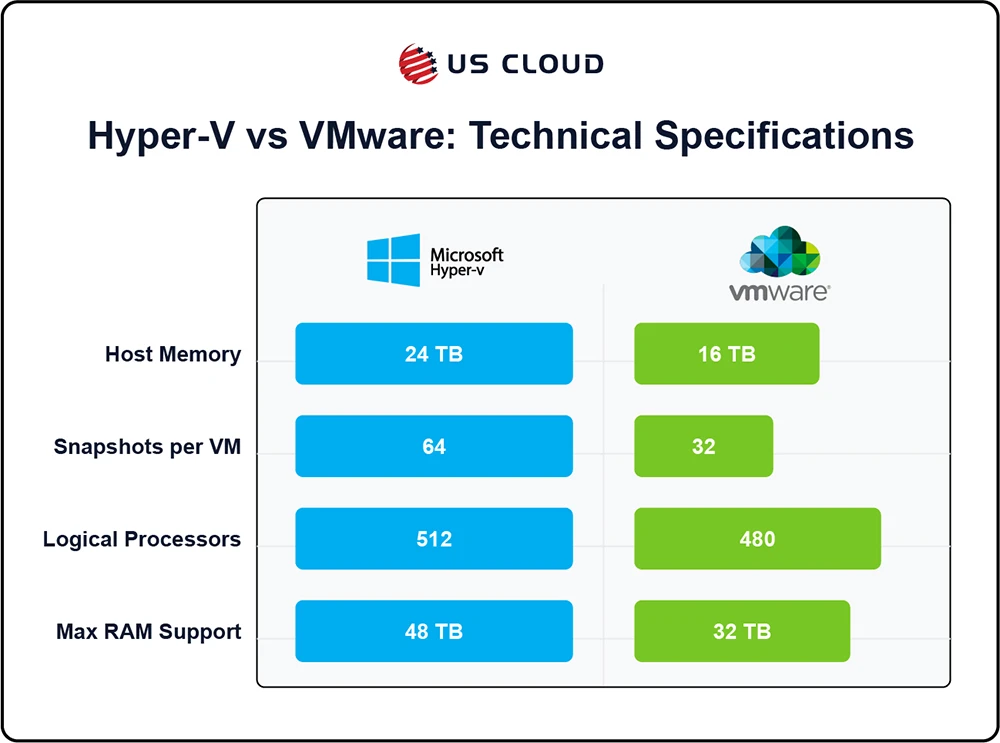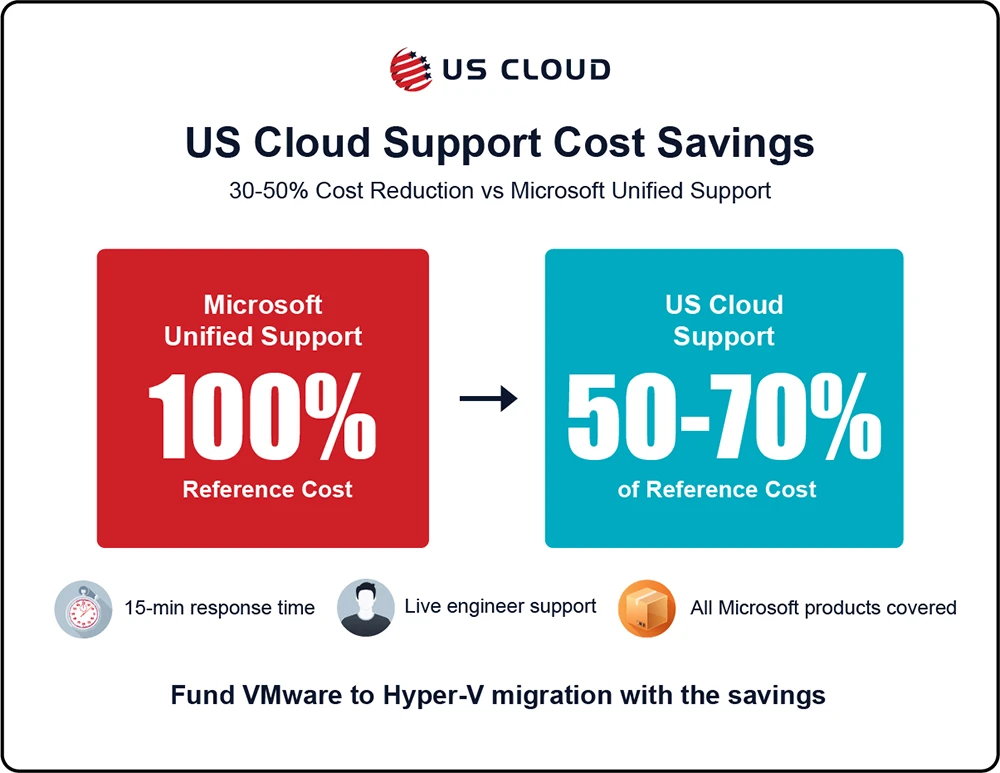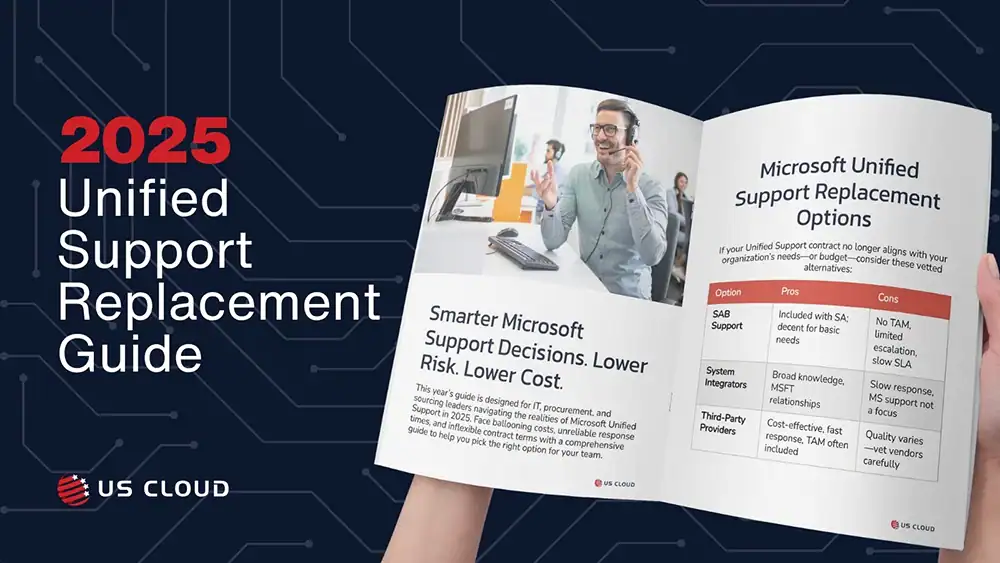
VMware Alternatives Race: Why Hyper-V Is in the Lead & How CIOs Fund Migrations.

Enterprises Race to Identify Alternatives to VMware
Broadcom’s acquisition of VMware has sent shockwaves through the enterprise IT landscape, leaving organizations at a critical crossroads. The transition to a premium-priced VMware Cloud Foundation subscription model isn’t just a change in licensing—it’s a seismic shift that threatens to derail IT budgets and long-term strategies.
As the clock ticks on existing Support and Subscription agreements, enterprises face an urgent dilemma: adapt to Broadcom’s costly new paradigm or embark on a high stakes search for VMware alternatives. Furthermore, if an alternative is found, how will the migration be funded?
With perpetual licenses becoming relics of the past and familiar support structures crumbling, IT leaders are racing against time to safeguard their virtualization infrastructure and protect their bottom line. The stakes have never been higher, and the need for decisive action has never been more pressing.
Gartner Identifies Hyper-V as Best Alternative to VMware
While VMware continues as the leader in Gartner’s Magic Quadrant for Hyperconverged Infrastructure Software, Microsoft’s Hyper-V is closing the gap and approaching feature parity with the latest release in Windows Server 2025 (release date 11-1-24). The two most significant enhancements to Hyper-V in Windows Server 2025 include:
- Revised GPU partitioning capability (GPU-P) for high-performance computing and AI-driven applications
- Dynamic compatibility for live migrations, allowing Hyper-V to automatically compare CPUs across hosts and use compatible functionality.
The enterprise virtualization landscape offers several robust alternatives to VMware in addition to Hyper-V. See the next section for a breakdown of the key players, their features, and how they generally compare.
VMware Alternatives Comparison Table
| Alternative | Key Features | Comparison to VMware |
|---|---|---|
| Microsoft Hyper-V |
|
|
| Nutanix AHV |
|
|
| Proxmox VE |
|
|
| Red Hat Virtualization |
|
|
| OpenStack (with Nova) |
|
|
| Citrix Hypervisor (formerly XenServer) |
|
|
| Oracle VM VirtualBox |
|
|

Key Advantages of Hyper-V Over VMware as a Virtualization Alternative
Microsoft Hyper-V has emerged as a compelling alternative to VMware for enterprise IT virtualization needs, offering several key advantages:
Cost-Effectiveness
Hyper-V is included with Windows Server licenses, making it a more economical choice for organizations already invested in the Microsoft ecosystem. This integration can lead to significant cost savings compared to VMware’s separate licensing requirements.
Seamless Microsoft Integration
Hyper-V offers tighter integration with Microsoft’s advanced features, including memory allocation and virtual networking. This deep integration with Windows Server, Active Directory, Group Policy, and other Microsoft services ensures better performance and compatibility for Windows-centric environments.
Azure Cloud Integration
Hyper-V provides excellent compatibility and easier migration paths with Microsoft Azure. This seamless integration facilitates hybrid cloud deployments and allows enterprises to leverage Azure’s extensive cloud services more effectively.
Scalability and Performance
While VMware has traditionally been known for its performance, Hyper-V has made significant strides:
- Hyper-V supports up to 24 TB of host memory, compared to VMware’s 16 TB.
- Hyper-V allows for 64 snapshots per VM, while VMware is limited to 32.
- Hyper-V hosts can support up to 512 logical processors and address up to 48 TB of RAM, surpassing VMware vSphere 8.0’s capabilities in some areas

Familiar Management Tools
For organizations with Windows-experienced IT teams, Hyper-V offers a more familiar management interface through Hyper-V Manager and PowerShell. This can lead to easier implementation and management, reducing the learning curve for administrators.
Continuous Improvement
Microsoft has made drastic improvements to Hyper-V over the years, steadily closing the gap with VMware in terms of feature set and capabilities. This commitment to ongoing development ensures that Hyper-V remains a competitive and future-proof solution for enterprise virtualization needs.
Hyper-V vs VMware: A Bottom-Line Comparison
While both Hyper-V and VMware offer robust virtualization solutions, Hyper-V’s cost-effectiveness, seamless Microsoft integration, Azure compatibility, and continuous improvement make it an increasingly attractive option for enterprise IT virtualization, especially for organizations already invested in the Microsoft ecosystem.
Leverage US Cloud Savings to Fund VMware to Hyper-V Migration
In today’s rapidly evolving IT landscape, forward-thinking CIOs are discovering innovative ways to optimize their budgets while enhancing their infrastructure. A growing trend among these tech leaders is leveraging the substantial savings from switching to US Cloud support to fund strategic initiatives, particularly the migration from Broadcom VMware to Microsoft Hyper-V.
Unlocking Significant Savings with US Cloud
The shift from Microsoft Unified Support to US Cloud is proving to be a game-changer for enterprise IT budgets. US Cloud offers a compelling value proposition:
- 30-50% Cost Reduction: Enterprises are experiencing dramatic savings compared to Microsoft Unified Support pricing
- Superior Service: With guaranteed 15-minute response times from live engineers, US Cloud outpaces Microsoft’s standard SLAs.
- Comprehensive Coverage: US Cloud provides support for all Microsoft products, both on-premises and cloud-based.

These benefits are not just theoretical: every day, US Cloud provides high-quality support for a fraction of a cost to enterprises around the world. .
Reinvesting Savings into Strategic Infrastructure
The savings realized from switching to US Cloud are substantial, often ranging from 30% to 50% of previous support costs. Savvy CIOs are seizing this opportunity to reinvest these funds into critical infrastructure upgrades, with the migration from VMware to Hyper-V emerging as a top priority.
The Strategic Move from VMware to Hyper-V

By redirecting the savings from US Cloud support, many CIOs are funding the transition to Hyper-V without additional budget requests. This strategic move offers multiple benefits:
- Reduced Licensing and Support Costs: Eliminating VMware licensing fees while leveraging existing Microsoft investments and US Cloud support.
- Simplified Management: Utilizing familiar Windows-based tools for virtualization management.
- Enhanced Cloud Integration: Seamless integration with Azure for hybrid and multi-cloud strategies.
Why Hyper-V?
Microsoft Hyper-V has evolved into a robust alternative to VMware, offering several advantages:
- Cost-Effectiveness: Hyper-V is included with Windows Server licenses and supported by US Cloud, providing significant savings over VMware’s licensing model.
- Seamless Microsoft Integration: Tighter integration with Windows environments, Azure cloud services and US Cloud comprehensive support.
- Scalability: Hyper-V supports up to 24 TB of host memory, surpassing VMware’s capabilities in some areas.
Combine VMware Alternatives with Third Party Microsoft Support Options for Real-World Impact
Enterprises making this dual transition are reporting impressive results. Not only are they saving on support costs, but they’re also streamlining their virtualization infrastructure and reducing overall IT complexity.
The shift to US Cloud support is more than just a cost-saving measure; it’s a strategic enabler for IT transformation. By freeing up substantial funds, CIOs are positioning their organizations for a more agile, cost-effective, and Microsoft-aligned future. As we move further into 2025, this trend is likely to accelerate, with more enterprises recognizing the dual benefits of optimized support costs and modernized virtualization infrastructure.
For CIOs looking to drive innovation while managing costs, the VMware to Hyper-V strategy, funded by US Cloud savings, represents a compelling path forward in the ever-evolving landscape of enterprise IT.
Call US Cloud today to see how our team can support you through the migration and maintenance of your virtualization platform.



